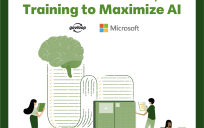Agencies might want to take the data problem head-on, but with so much data and so few dedicated staffers, where can they begin?
Recently, the federal government created a North Star for data guidance. The Federal Data Strategy illuminates 10 key principles and 40 best practices for data management at agencies. The strategy features an action plan, which includes ideas for pilots and coalitions for the data community.
The President’s Management Agenda also highlighted that data shouldn’t just be stored; it should be leveraged as a strategic asset. Now, with another recently passed law, federal agencies are required to have chief data officers, a new executive seat within the technology hierarchy. Chief data officers will work together on a council to improve standardization and data sharing.
These large-scale motions will jointly work to clean up the data jungle. But while it’s important to have encouragement from higher-ups, raising an organization of clean, standardized and usable data takes a village.
Employees that previously weren’t involved heavily in data need to have access to actionable information so that they can improve their own processes. Data can be used to discover cost savings, identify duplicative efforts and catch cases of fraud or waste.
In the Defense Logistics Agency, for example, investments in data visualization tools have already uncovered gold nuggets of cost savings. Visualization tools show data in graphical, easily understood ways and they’re one of the easiest methods for recognizing meaning in expansive data sets.
Looking at its food and dining contracts, DLA quickly found pricing anomalies – which it was alerted to by the data visualization tool. As of August 2019, DLA was able to recoup $10,000 that was owed to the government.
DLA, which has a new Chief Data Office, data strategy and data governance plan, is at the frontier for making data available throughout entire organizations. Responsible for the military’s supply chain, DLA operates in 28 countries and has over 26,000 employees – and it wants each one to have easy access to data insights.
If agencies can standardize, quantify and clean their data, then they have the opportunity to share with larger communities, both internal and external. They can also bring in artificial intelligence and automation to analyze and act on their newfound intelligence. And with more eyes on their information, agencies have more chances to stop errors in their tracks and make way for mission gains.
This blog is an excerpt from GovLoop Academy’s recent course, “Finding Your Way Through the Data Jungle with Self Service Analytics in Government,” created in partnership with Alteryx. Access the full course here.





the data visualization piece of this post is so interesting! i think it’s much easier to consume and analyze data when it’s presented in a mindful way